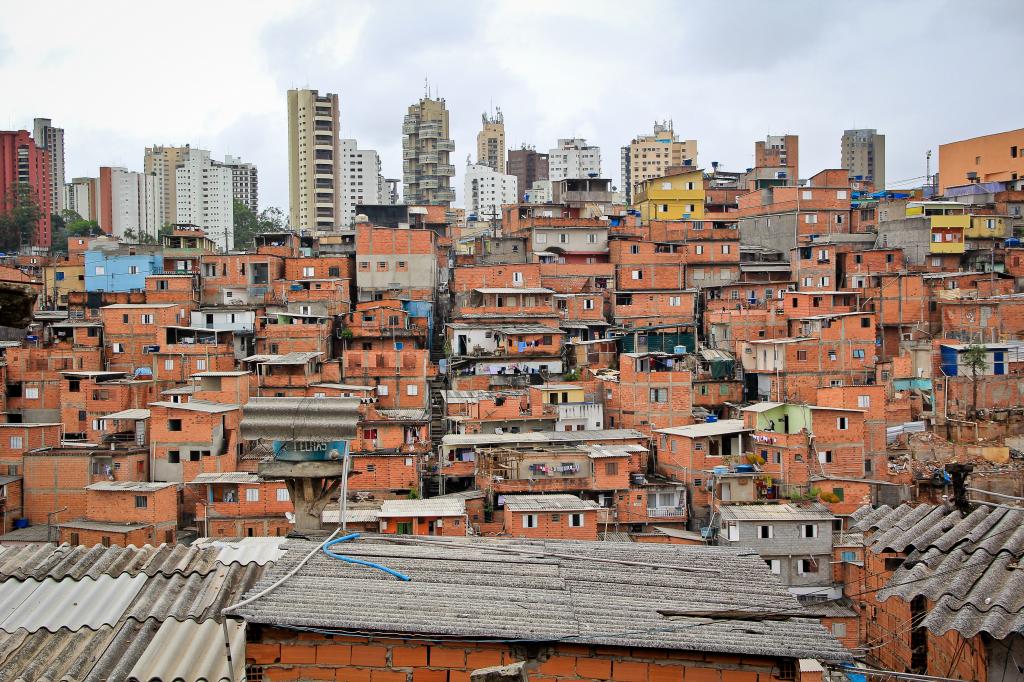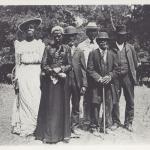I have posted quite a bit on the link between religion and demography. Obviously I don’t want to suggest any kind of mechanistic link here, but the connections are strong. To give an example, let me look at the history of Latin America over the last century or so. And although I touch on other topics, I promise to get back to that core religious theme.
If you look at the continent over that time period, then a great many things have happened – wars and revolutions, great social and intellectual movements, dazzling writers and cultural innovations. But here is one unavoidable fact. During the twentieth century, most of the countries in the region experienced a vast growth of population, usually by a factor of seven or eight, but in some cases approaching tenfold. That is an incredible fact in itself, and it can’t have failed to produce some far-reaching consequences.
Between 1900 and 2000, Brazil’s population swelled from 18 million to over 170 million; Mexico’s from 14 million to 100 million; Peru’s from 3 million to 27 million; Colombia from 4 million to 40 million. At the end of the century, fertility rates slowed suddenly, and in several countries fell below replacement. Even so, Mexico’s population is approaching 130 million, not including migrants in the United States. There are now 211 million Brazilians, 33 million Peruvians, and 50 million Colombians. If the US had grown at a comparable rate, then our population today would be approaching a billion.
We can look at this story in multiple ways. We could for instance marvel at how desperately underpopulated and sparsely inhabited those countries were in 1900; or else gasp at how horribly over-populated they are now. The consequences, as I say, are many. Just imagine how different the human impact on the environment would be in countries with perhaps one tenth the present level of population. It’s like a different planet.
Try and imagine a Mexican landscape where the people only constituted ten or eleven percent of the current figure. And think that through. In the 1910s, Mexico suffered its sweeping revolution that killed anywhere from one to two million people, and drove a further million into exile, mainly in the US. Those figures are horrible enough – but imagine those deaths and forced exiles combined as representing over 20 percent of the country’s population at the time. That is inconceivable to us.
But to return to that religious theme. Not only were those populations in 1900 (say) far smaller, but they were also overwhelmingly rural, facing strong constraints about how far numbers could grow beyond the limits of food production. As populations soared, so people poured into cities, which rapidly became megacities. Lima, for instance, had 100,000 people in 1900, rising to 530,000 by 1940, and a million in 1960. The 2000 figure was over six million, and today it is ten million. Put another way, in 1900, the city of Lima accounted for around three percent of the total national population of Peru. The modern proportion is 33 percent.
In Brazil, São Paulo’s population in 1900 was 240,000. Today it is at least twelve million, and some estimates range much higher, especially if we take account of the larger metro region. Since 1900, the population of Bogotá has grown from 100,000 to eleven million, again if we include the metropolitan area.
Urbanization has been particularly rapid in Central America. Today, over half of Guatemalans live in cities, 60 percent of Nicaraguans, 74 percent of Salvadorans. Such figures are unimaginably different from conditions in 1970, never mind in 1900.
At that point, we run into the familiar issue of correlation and causation. Yes, there was rapid population growth, and yes, urbanization was very speedy. So which came first? Actually, the answer is mixed: both developments occurred together. Cities grew, certainly, and developed new economic foundations, especially from the 1970s onwards. That drew in migrants from the countryside, and urban populations ballooned. At the same time, distinct from that urban growth, populations were swelling in the countryside and the villages. You certainly can have a rural population explosion, and that puts heavy demands on scarce resources, driving people off the land.
Those new populations moved to the cities for multiple reasons, including some that were not strictly economic. In Central America, for instance, urbanization was largely driven by the dual forces of natural disaster and the rural guerrilla wars of the 1980s. In Peru, likewise, the surge in Lima’s population was greatly accelerated by the rural guerrilla war and counter-insurgencies of the 1980s and 1990s. Across the region, environmental degradation and climate change both played a role. One impressive study shows a startling correlation between El Niño events and outbreaks of revolution and civil wars within tropical nations. The historically strong El Niño in 1982-83 contributed to escalating and enduring rural violence in both Peru and Central America.
What we can say with total confidence is that in virtually no case could those newly booming cities accommodate the needs of their legions of new residents, whether in terms of welfare, education or health. In the challenging situations they faced in their new homes, migrants naturally gravitated to those religious groups that offered them the basic means of survival. They found here opportunities for fellowship and community, but also the basic necessities that the state could not provide. Commonly, it was and is the Pentecostal and charismatic churches that are best organized to supply these needs, and in turn they benefit most from the repeated infusions of the uprooted. Catholic congregations certainly tried their very best to compete, but their structures were wholly geared to the old rural-dominated world, which is where the clergy were disproportionately located. Also, the religious system of Catholicism is utterly tied to the institution of trained clergy and priests, in a way that is just not true of evangelical congregations. Protestants in modern Brazil make up a quarter of the population. In Peru, the figure is fifteen percent.
If Protestantism in the region is not wholly synonymous with the great cities, and it certainly is not, then urbanization is a central fact in the religious story. Urbanization is generally accompanied by evangelical expansion. Arguably, it is the unavoidable foundation for such growth.
Urbanization means both religious and cultural transformation. Village societies accommodated naturally to Catholic social and ritual structures, which were closely attuned to the rhythms of the rural year. But when they moved to cities, they abandoned the old sacred landscapes they knew in their rural homes, with all their saints and shrines, and a sacred year marked by religious feasts and fasts. In their new homes, instead, they adopted a globalized form of modern faith, characterized by sophisticated modern media and advertising, including the most contemporary social media. In many cases, that meant abandoning older dialects and languages, including Native American tongues, for the modernity of Spanish and Portuguese. The change in music and musical taste is scarcely less profound: witness the dramatic upsurge in US-derived “Contemporary Christian Music” across the region. But whatever new believers have lost through these cultural revolutions, they feel that they have gained much. However poor in material things, they know in their hearts that they are following a pristine form of apostolic faith.
So in stressing that mushroom growth of population, I am also stressing two other intimately related facts, namely migration – mainly internal, from villages to cities – and urbanization. Both have tended to undermine older Catholic realities, and to supplant them with new form of Protestantism especially in evangelical guise. Cities drive Reformations.
We should have a strong sense of historical déjà vu here. In Early Modern Europe, Protestantism was especially associated with cities and towns, and so were more radical forms such as Calvinism. In seventeenth century Britain, for instance, when we do find Puritans in rural areas, we generally explain that by the influence of some particular city or town nearby, whether London or Bristol or Chester. Particularly before 1640, Protestant and Puritan cities confronted ritualistic and Catholic-leaning villages, with all their traditional customs and folk ways, their saints and their memories of the Virgin. Urban Protestants shuddered at these “dark corners of the land.”
And if you want to see evangelical churches stepping forward to meet the challenges of urbanization, then look no further than the role of Methodists and Dissenters in the cities and towns of Britain’s Industrial Revolution, as urban Anglicans became something close to an endangered species. That is so very much like the story of the modern relationship between evangélicos and Catholics in urban Latin America.
So does demography alone drive religious change? Of course not. But never try to write the story without taking account of that theme.














